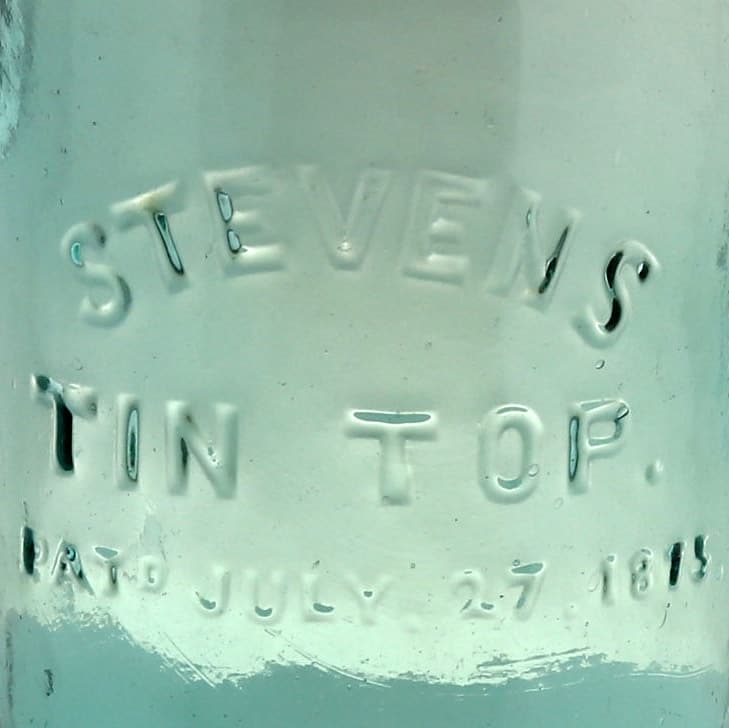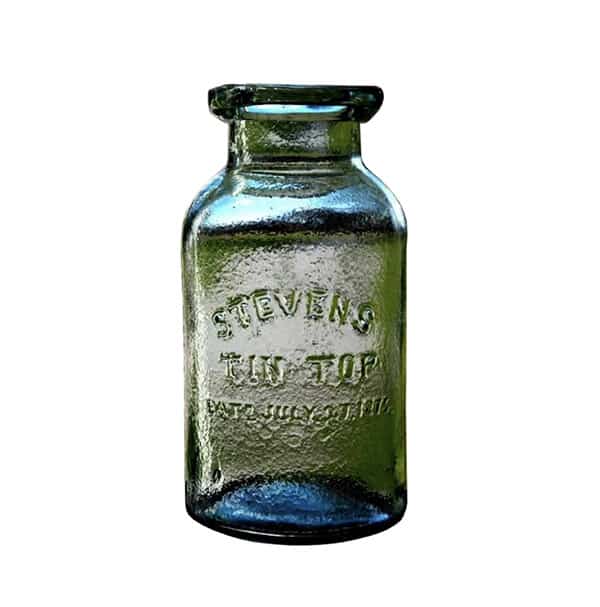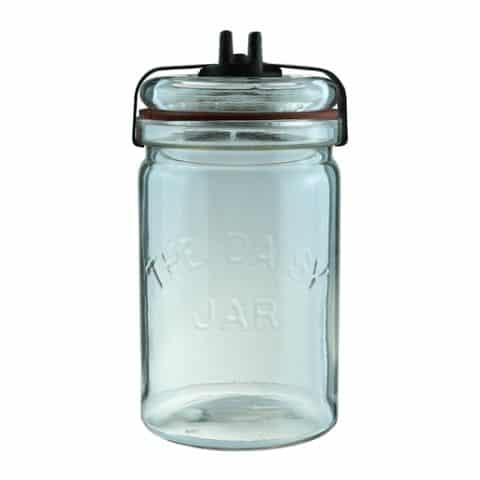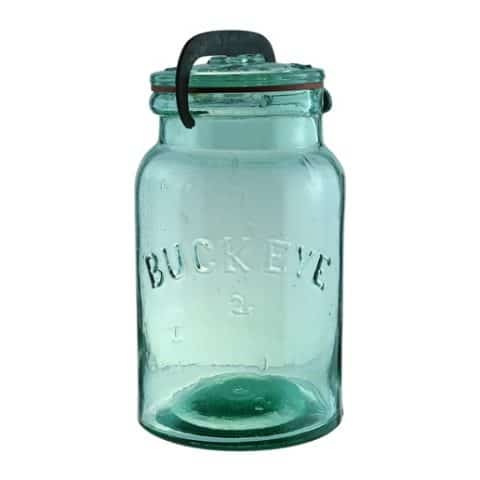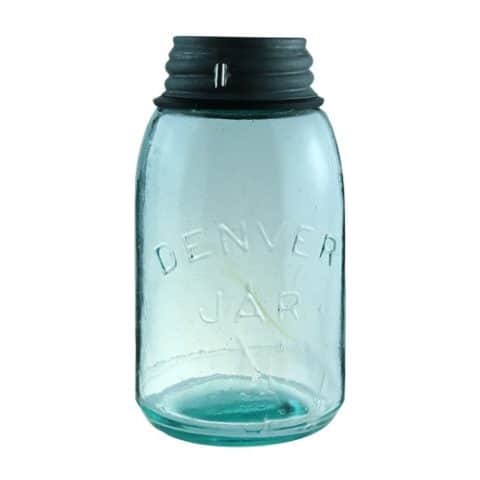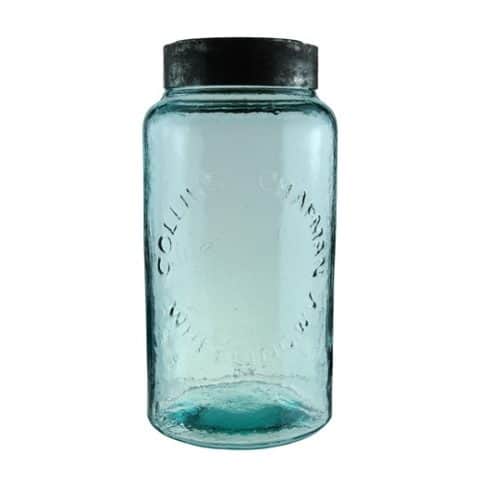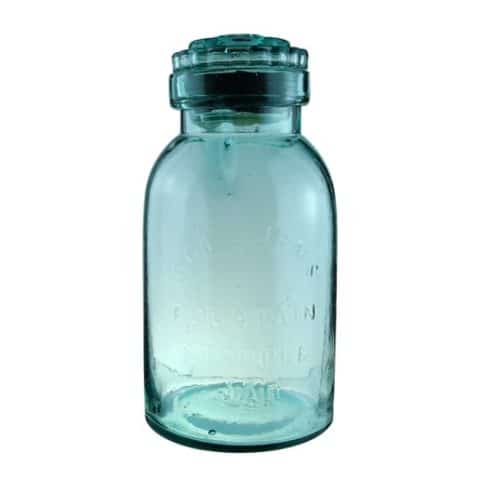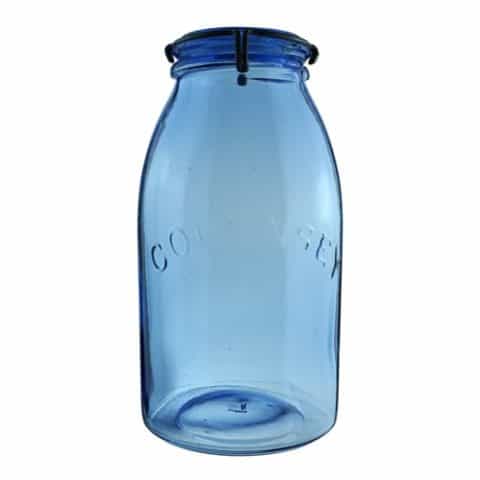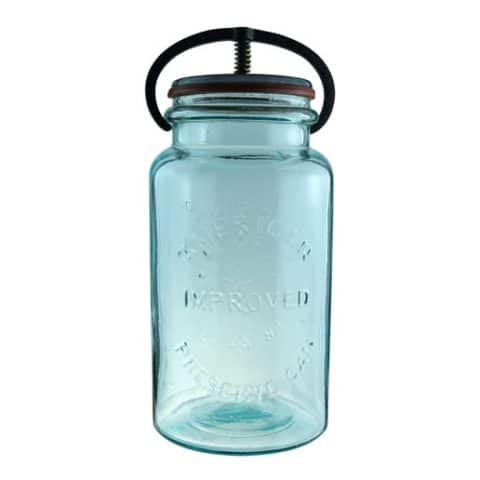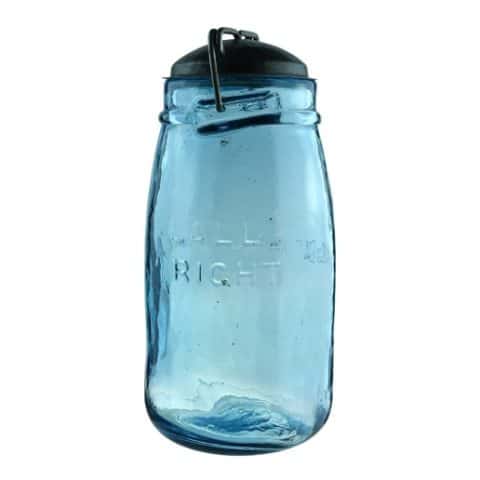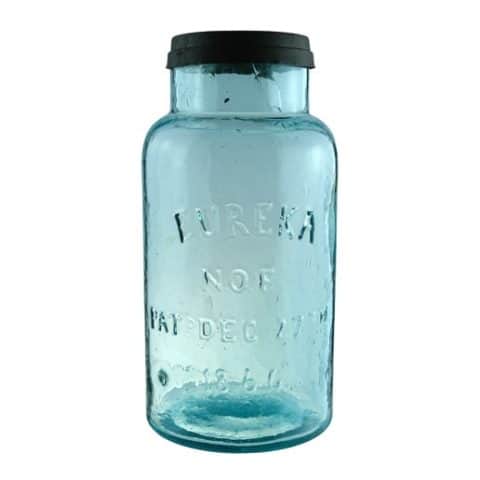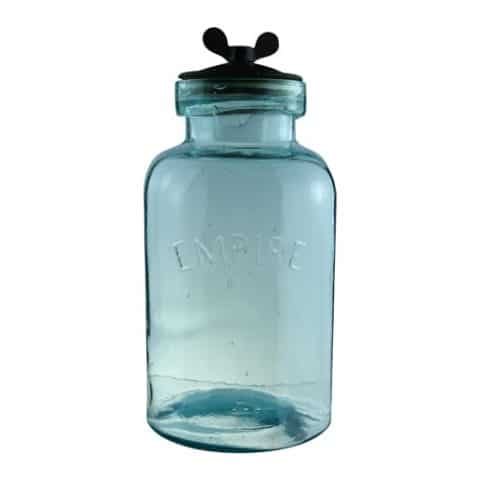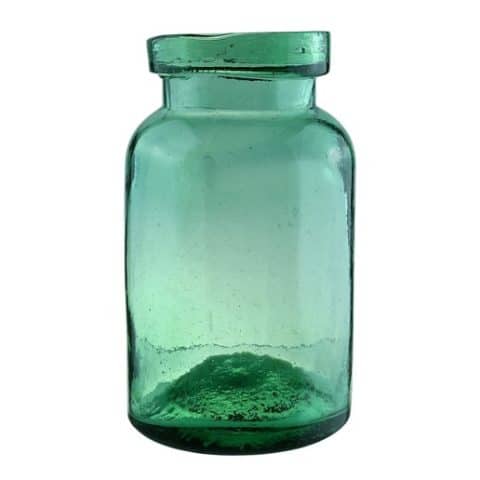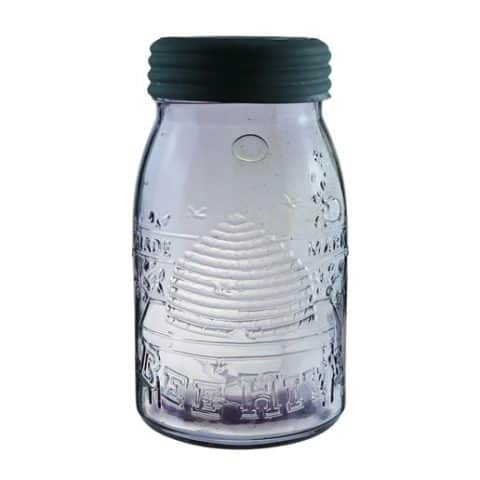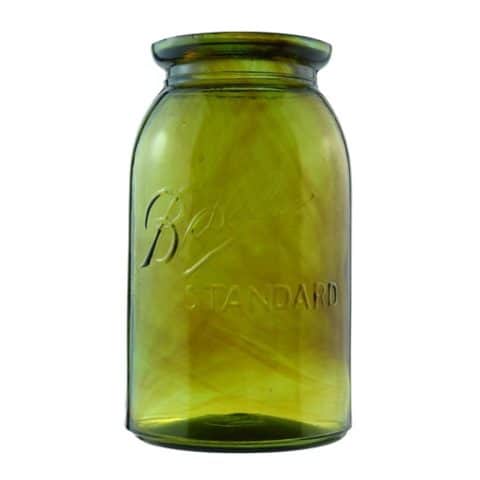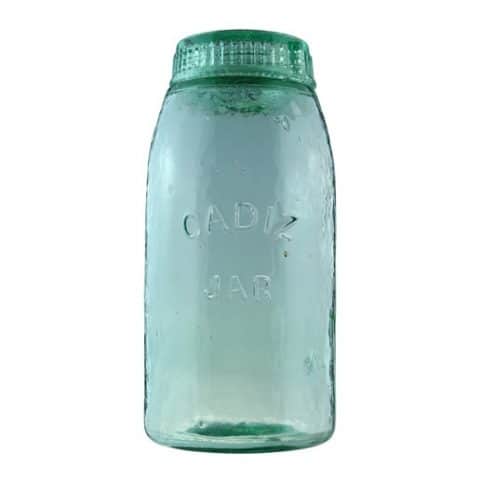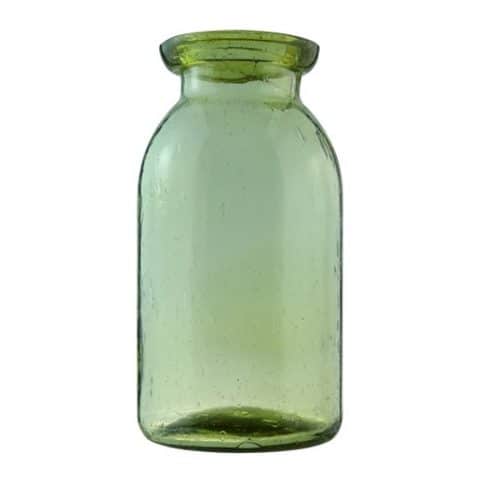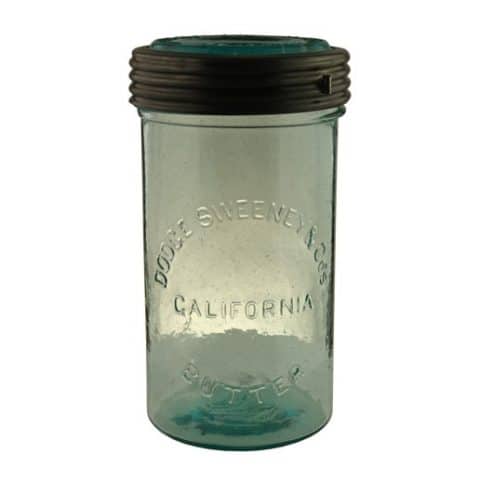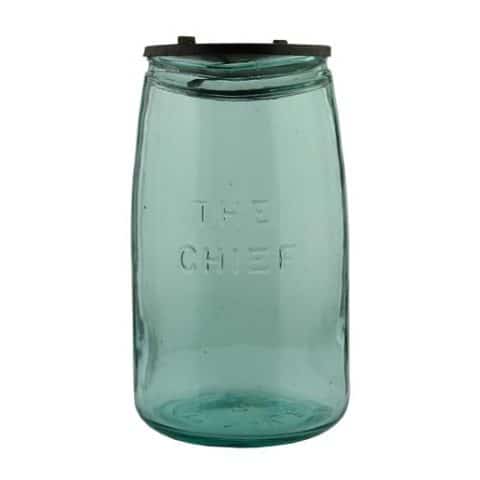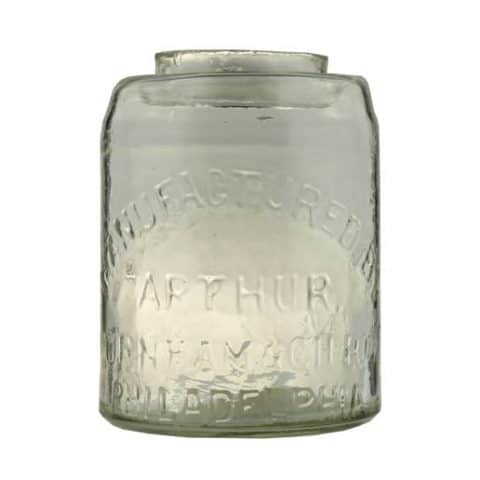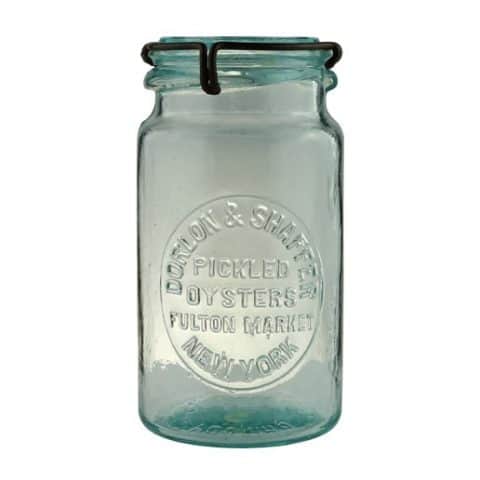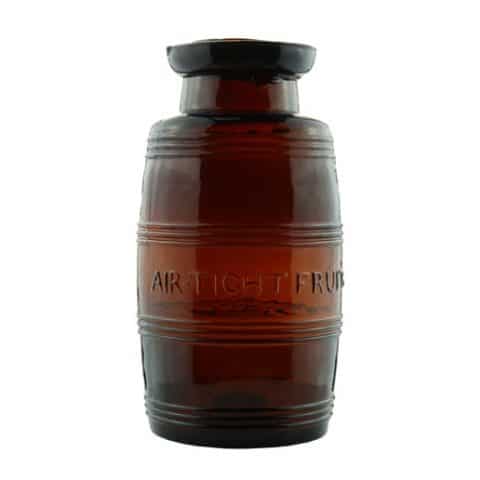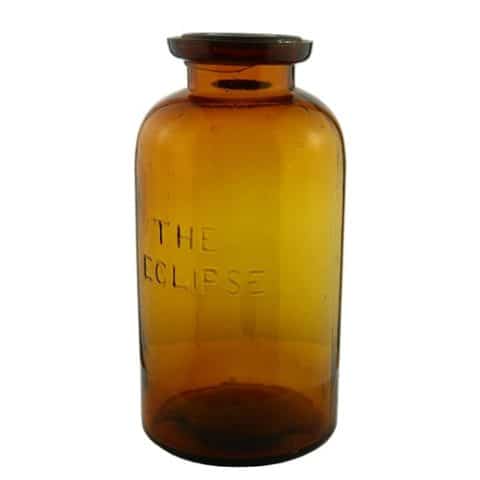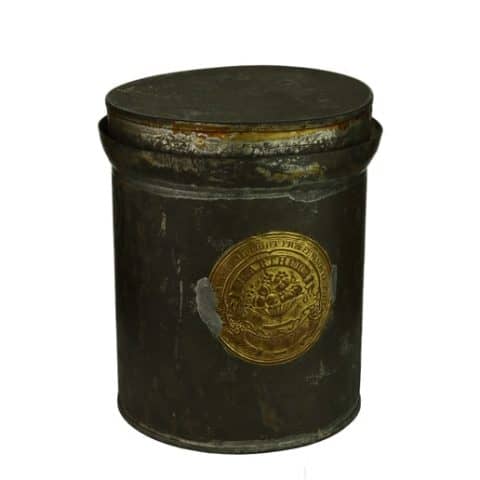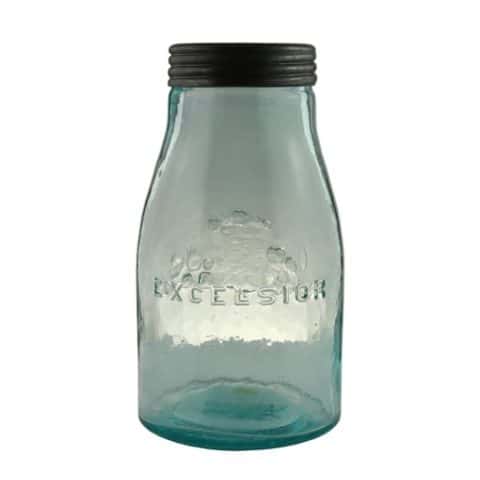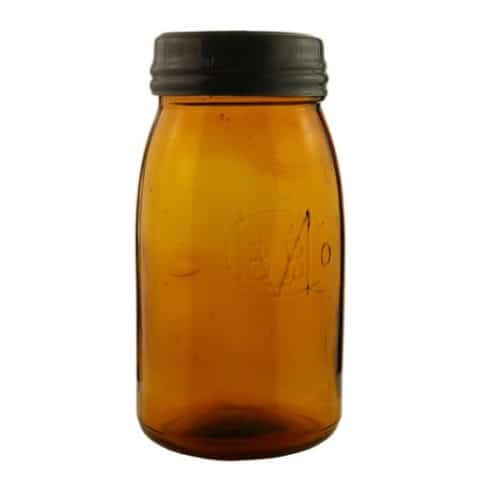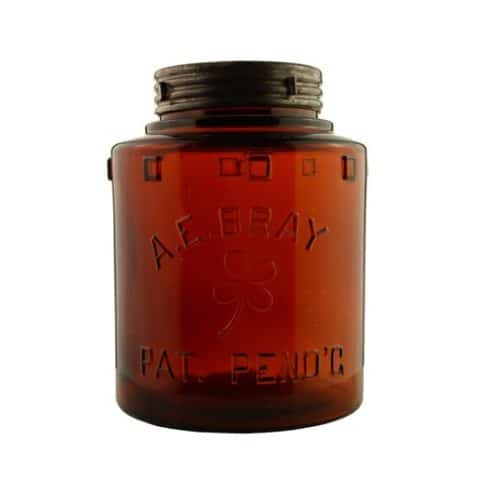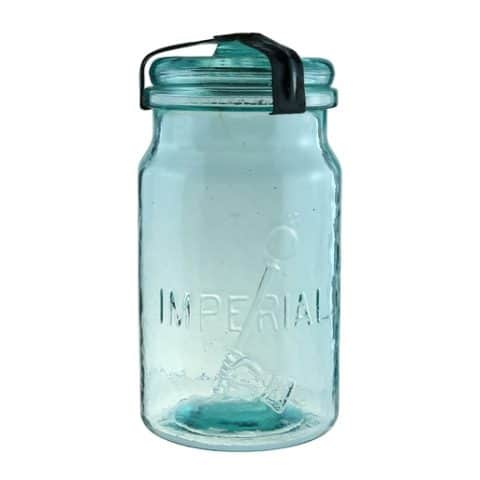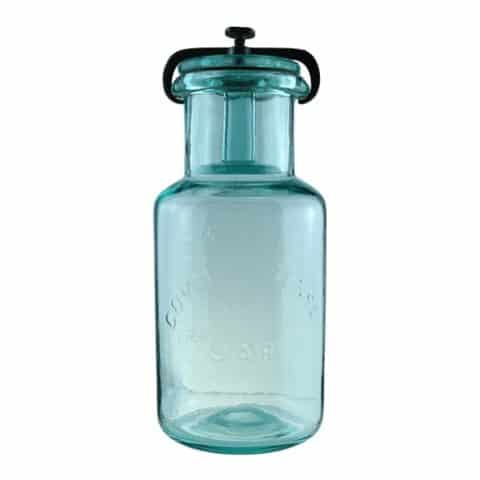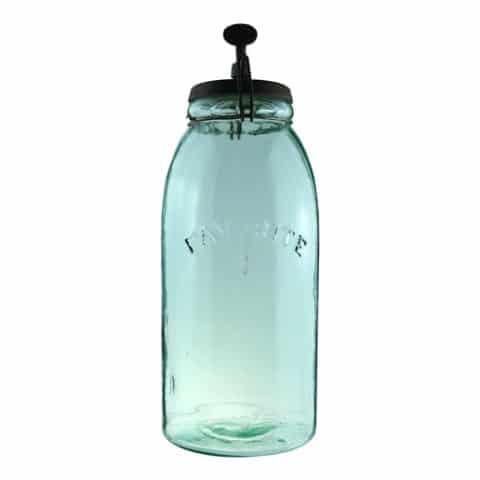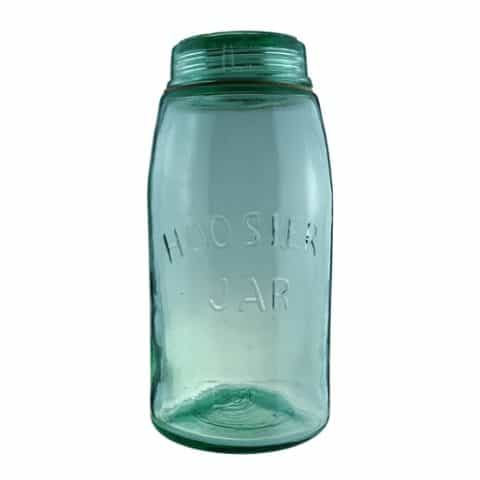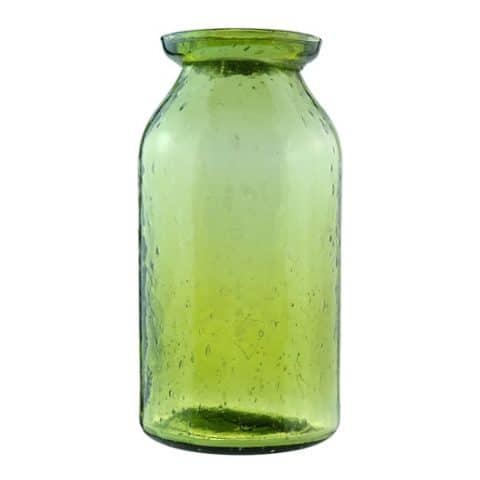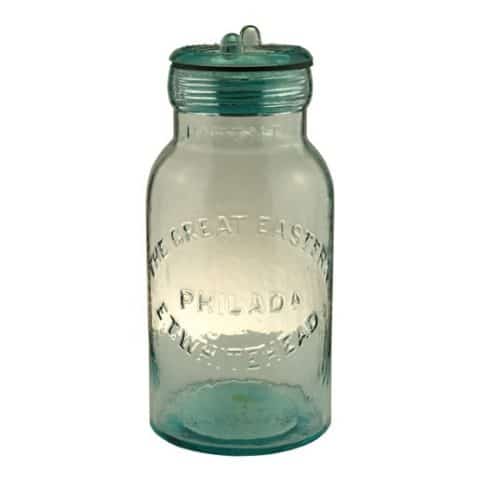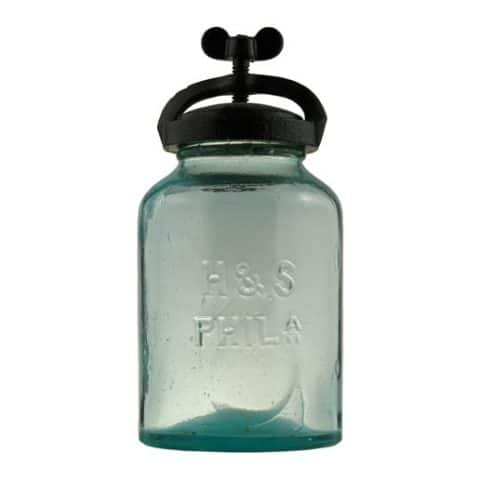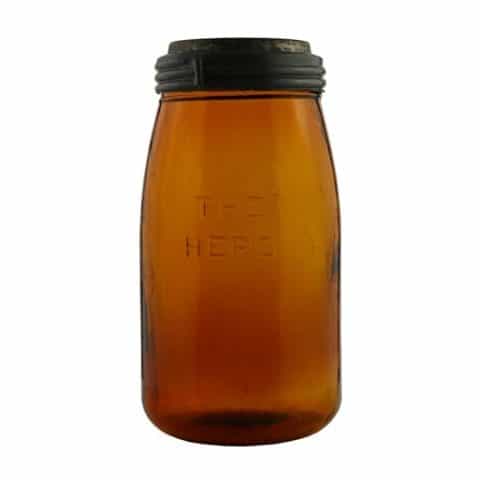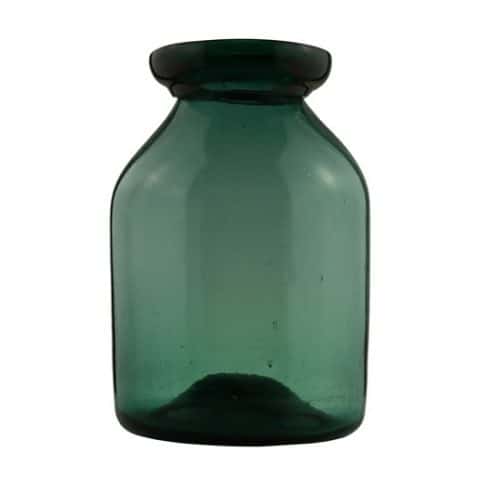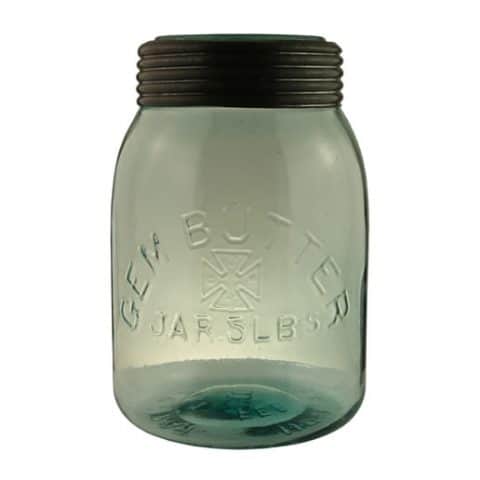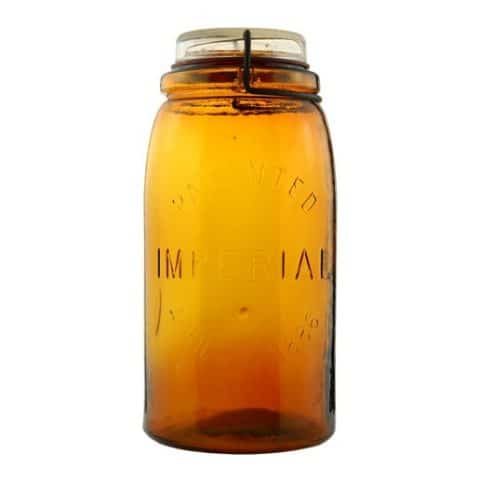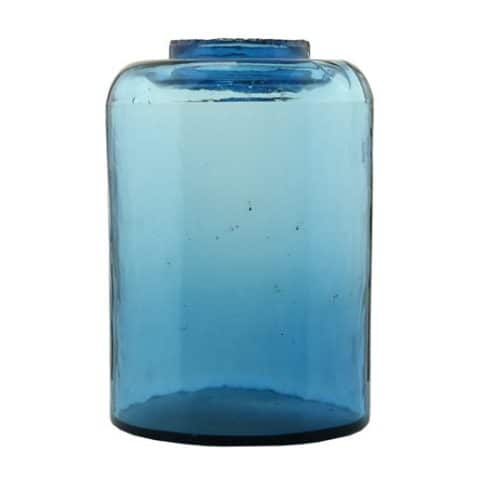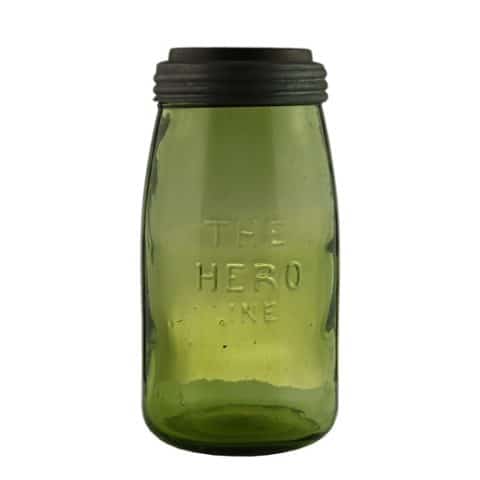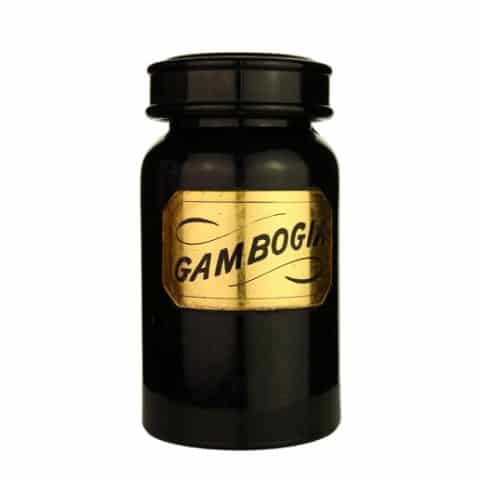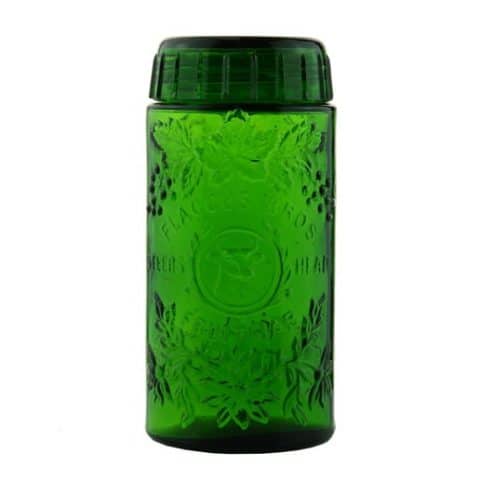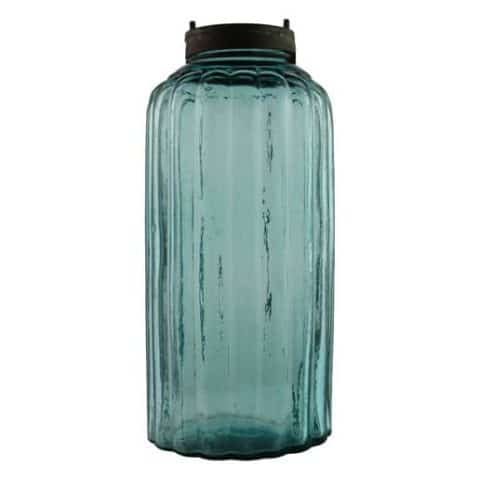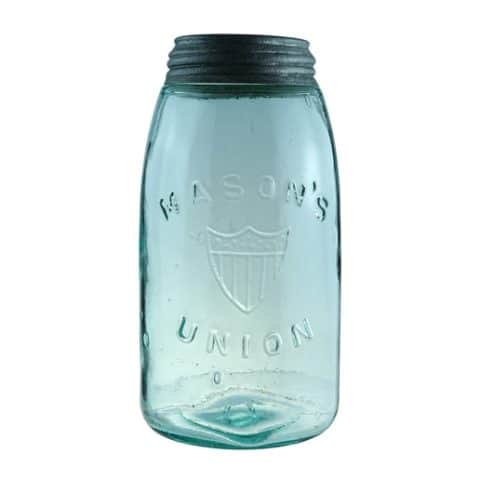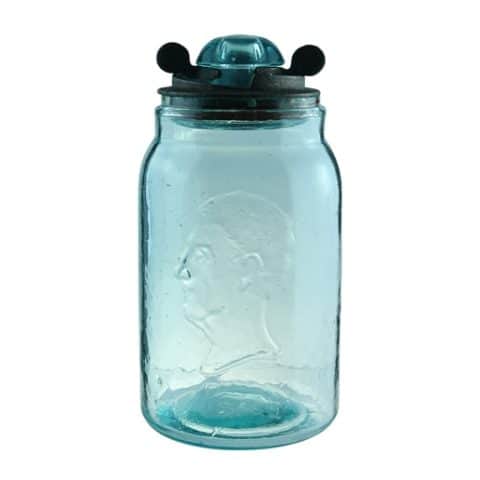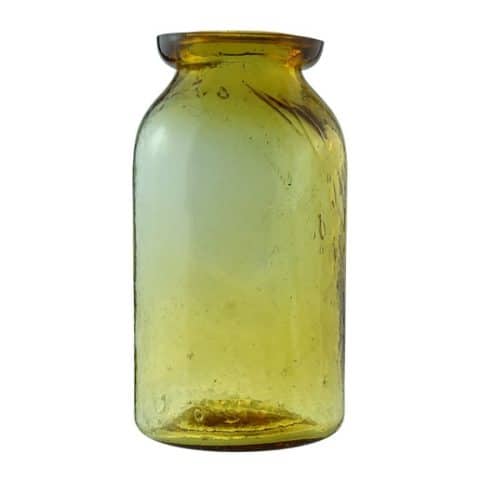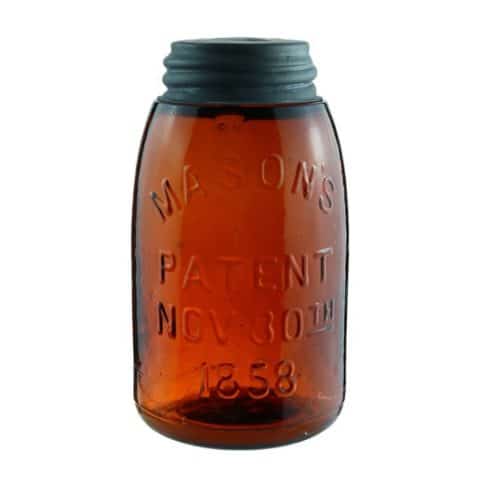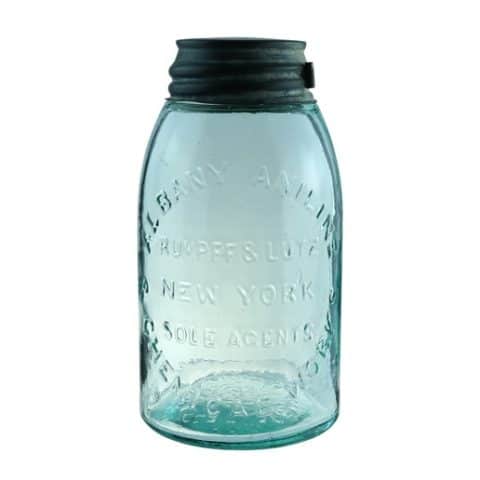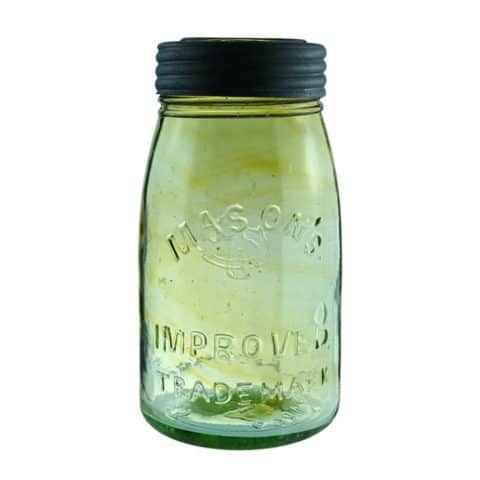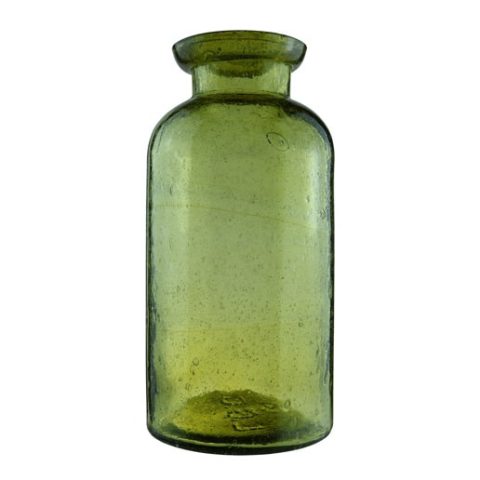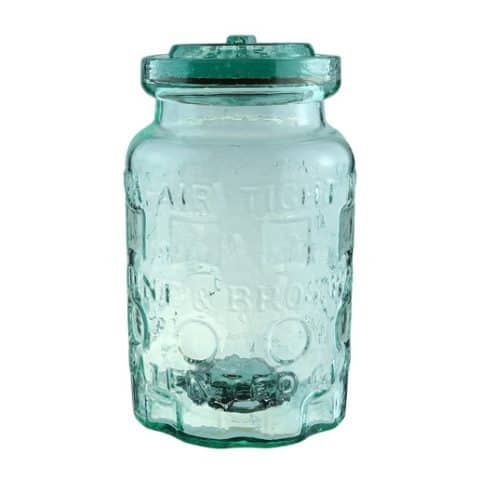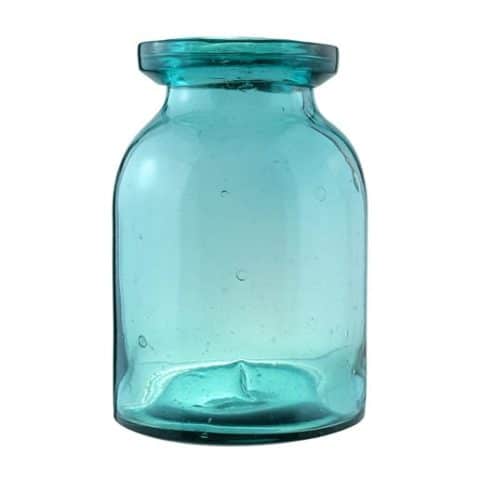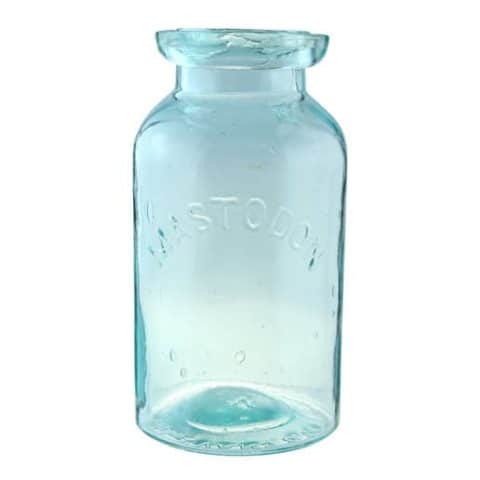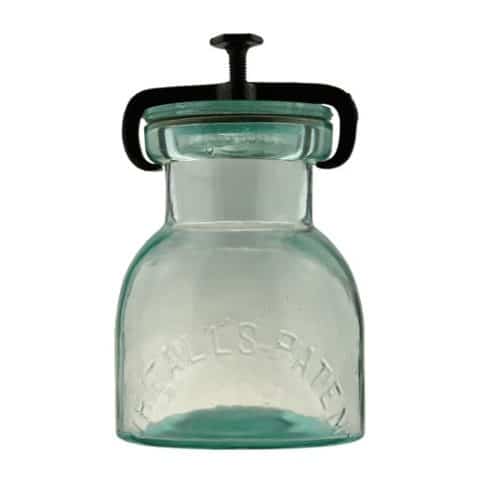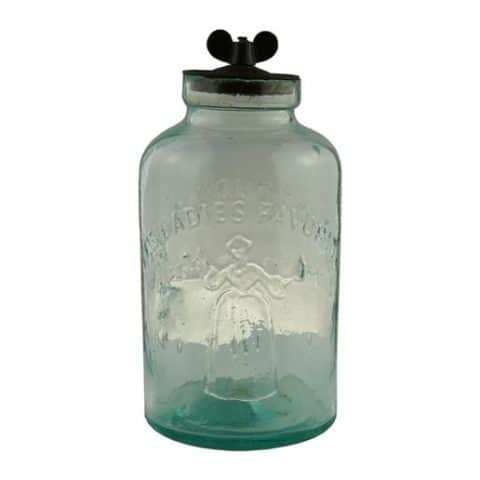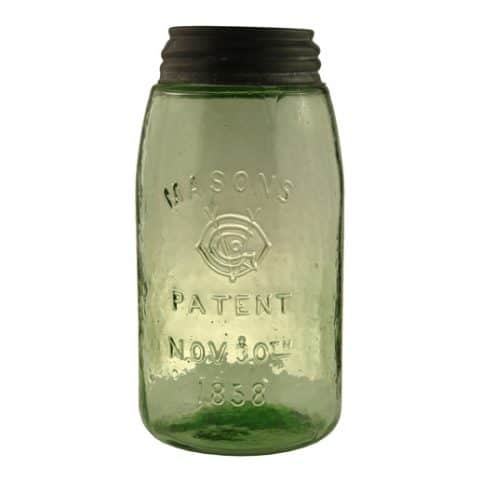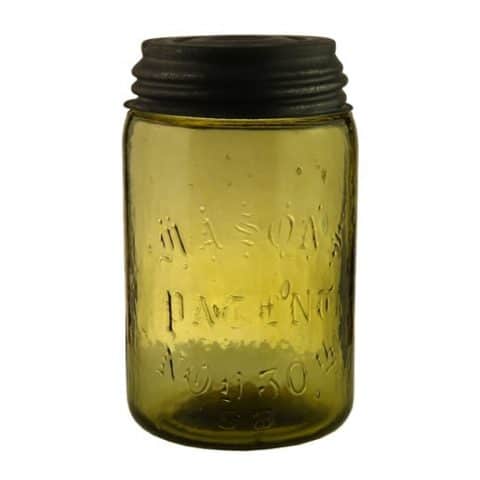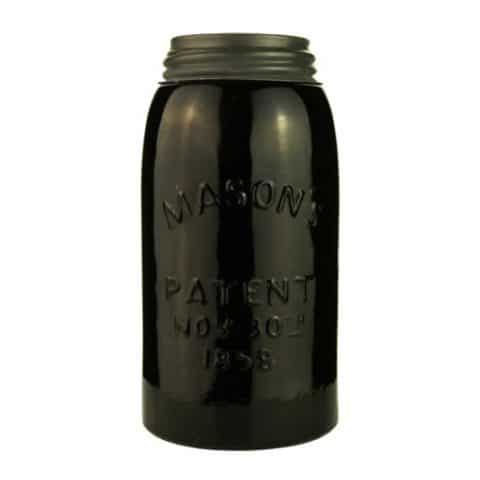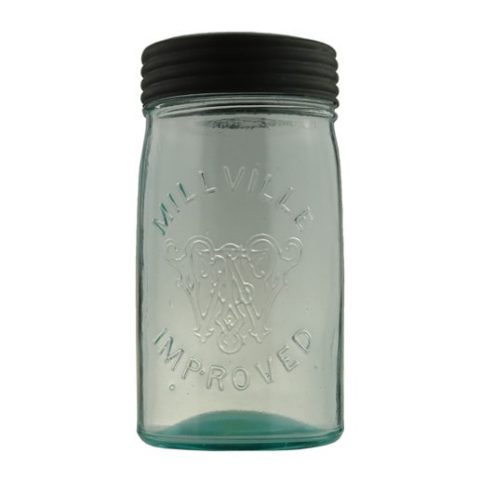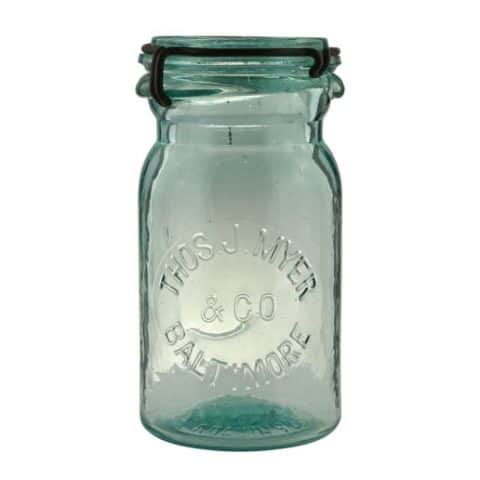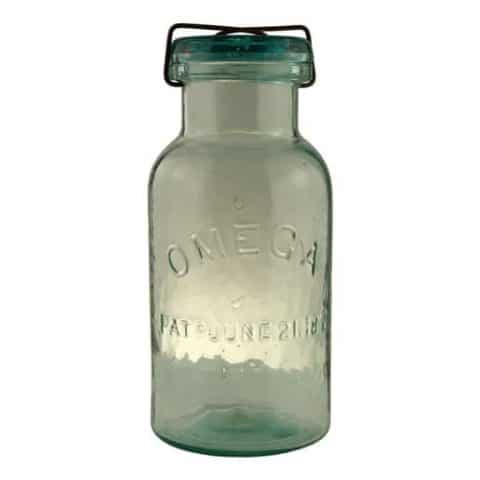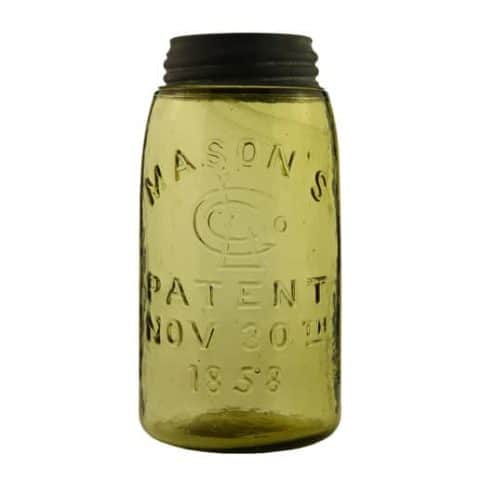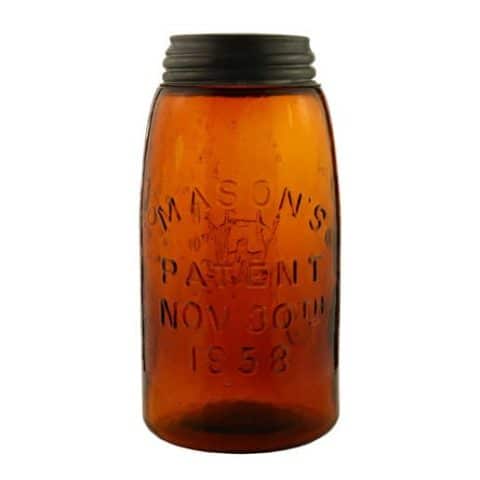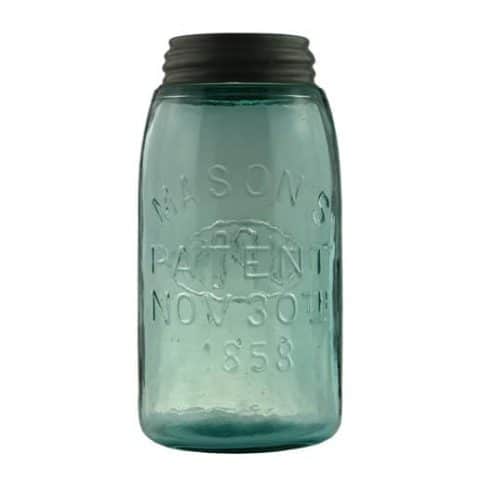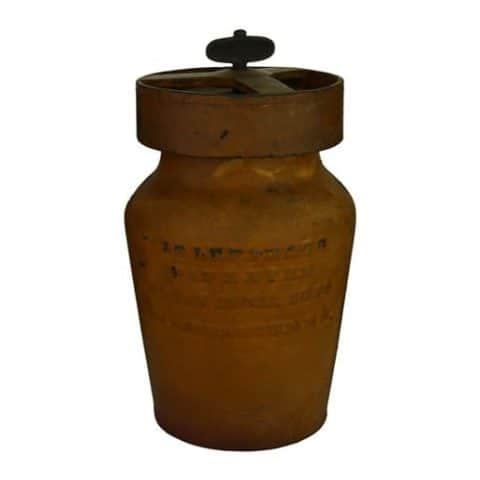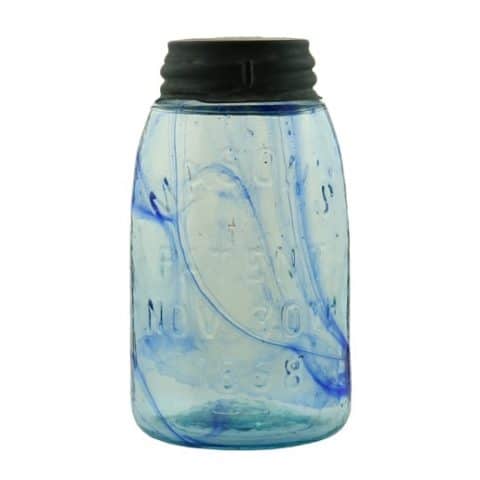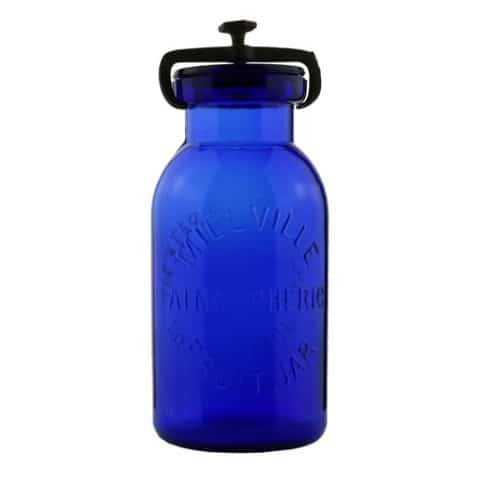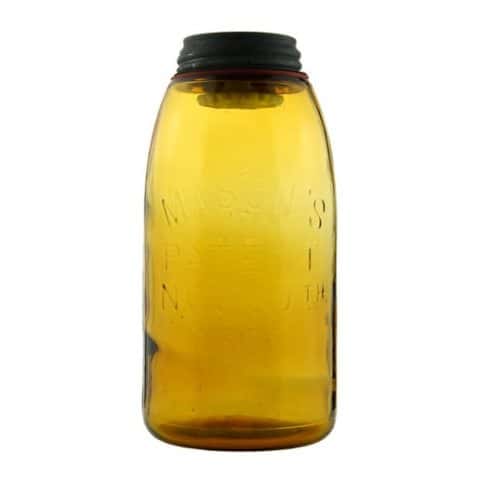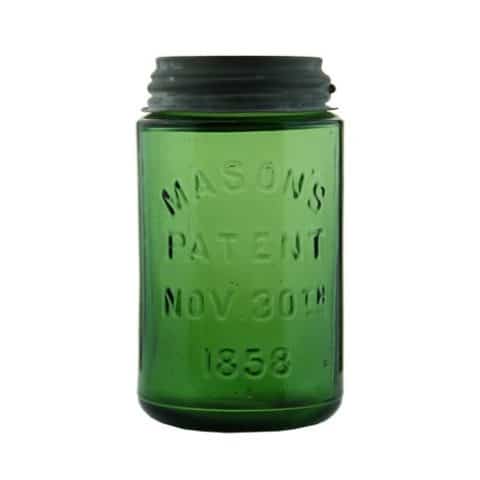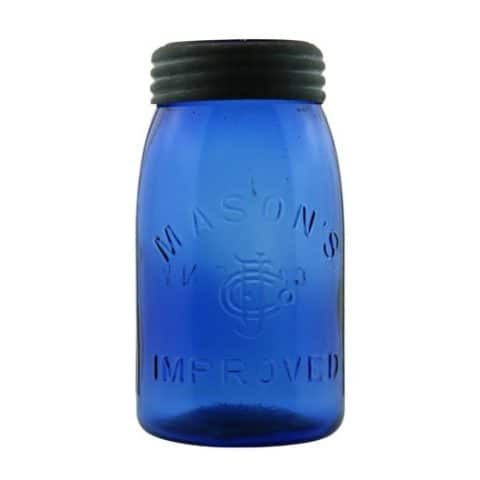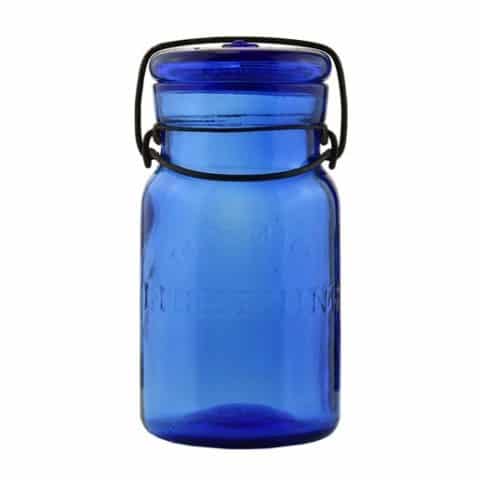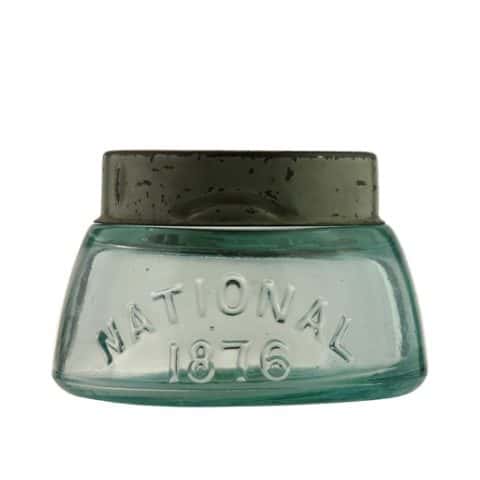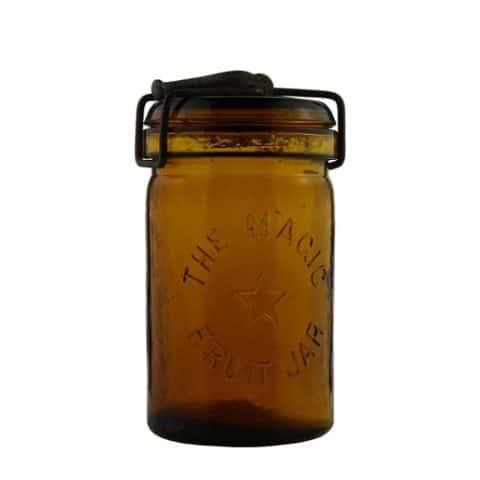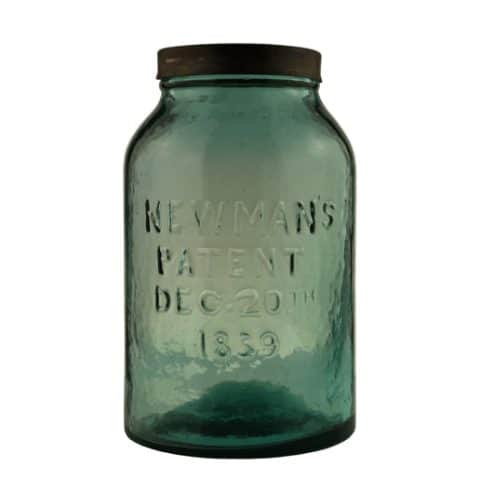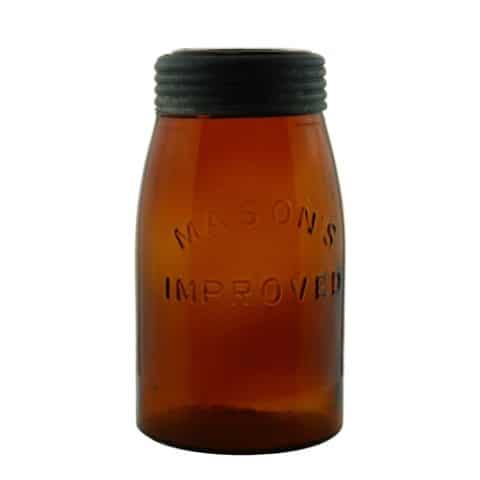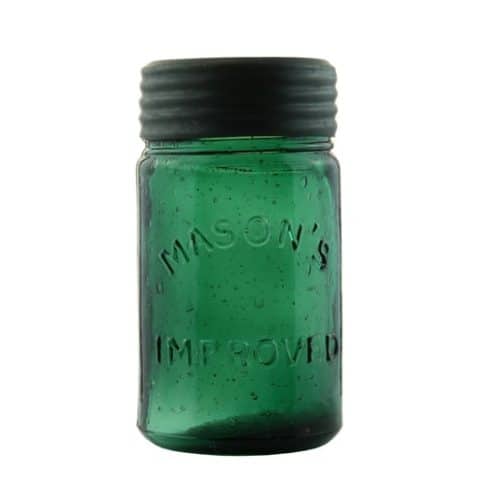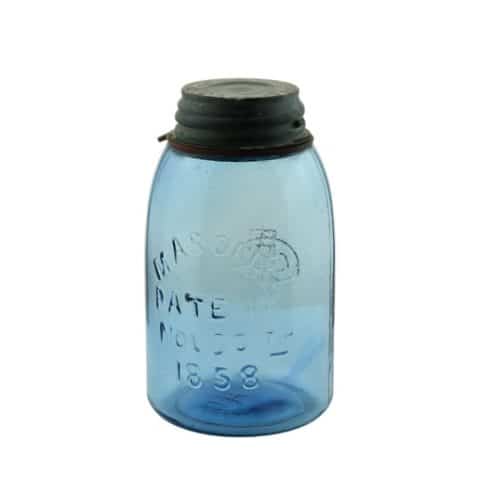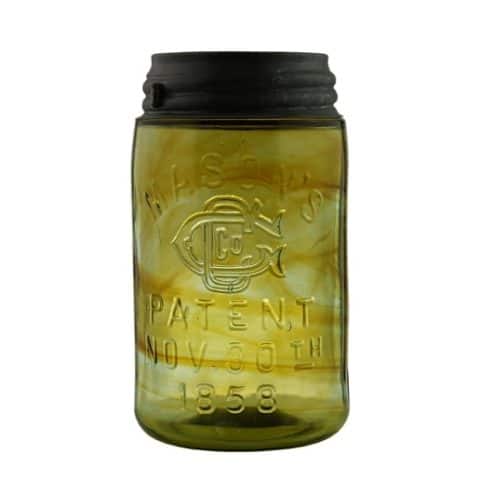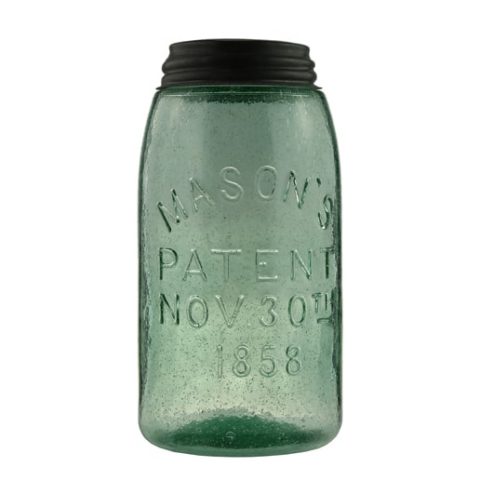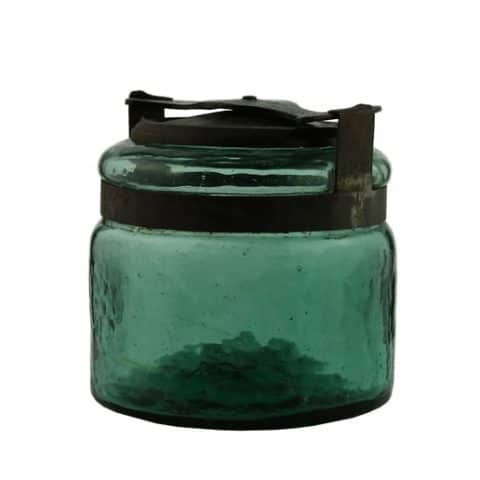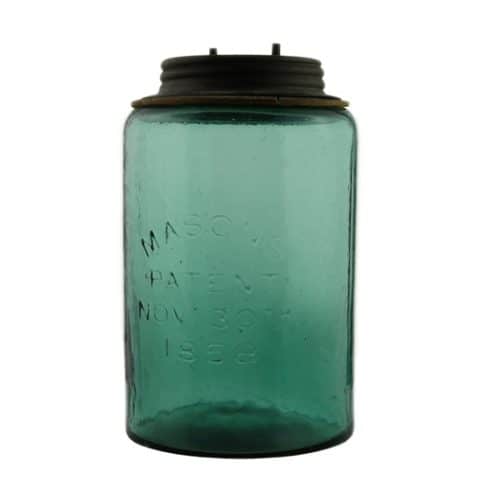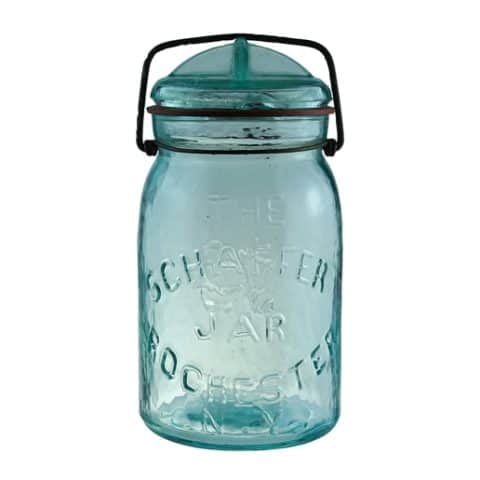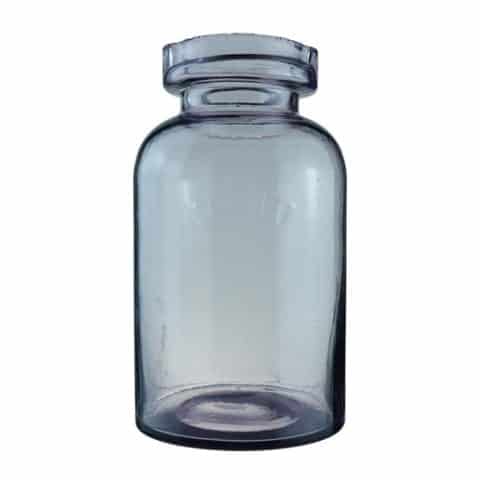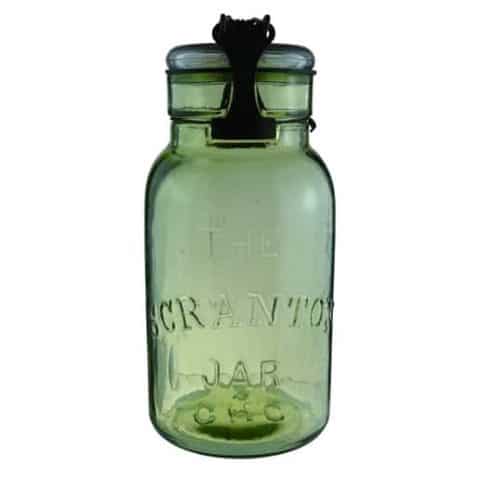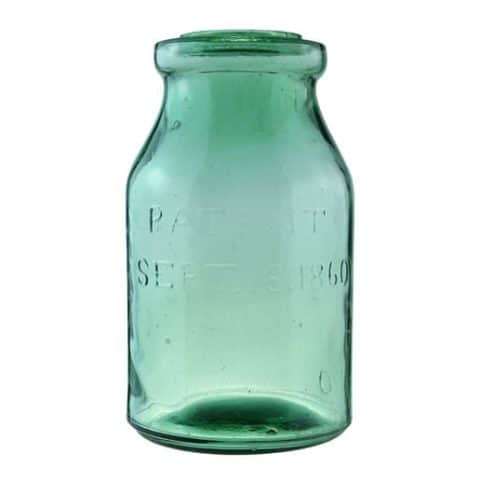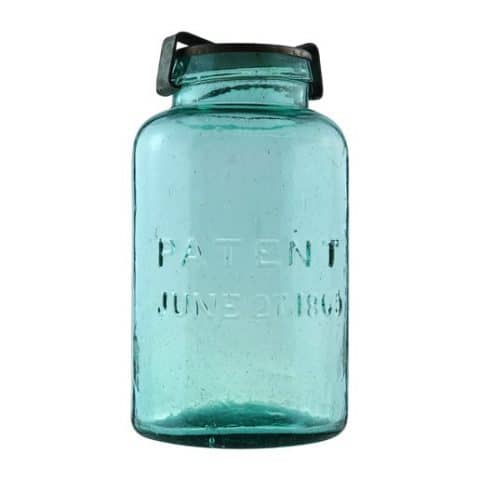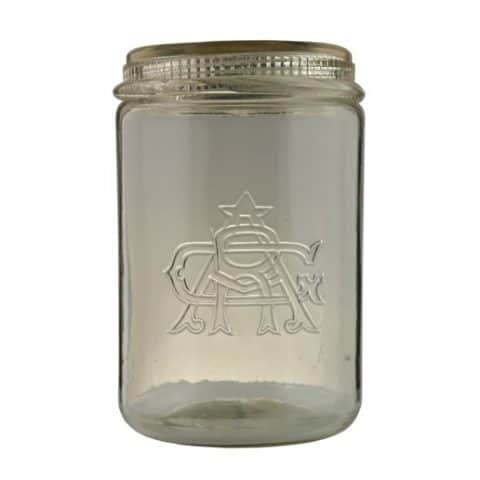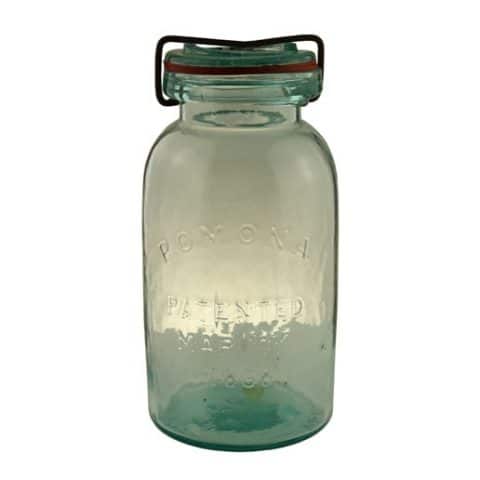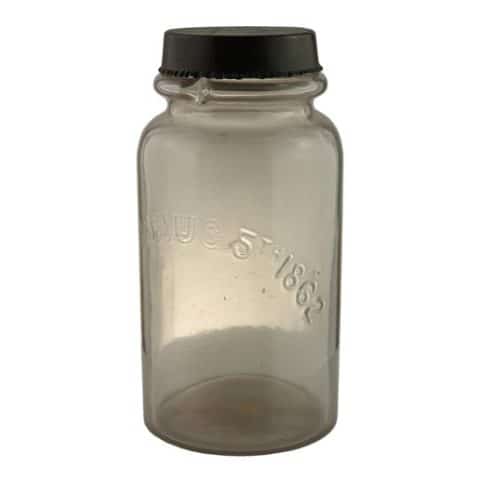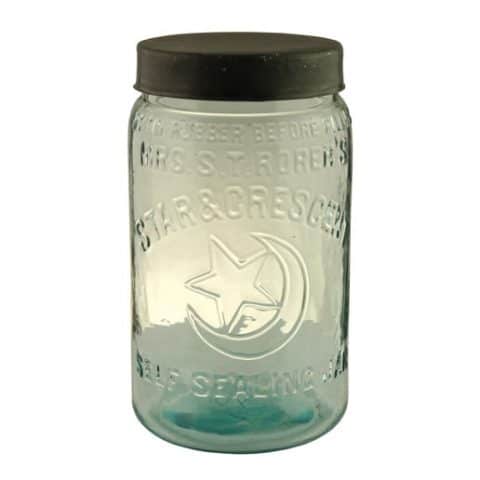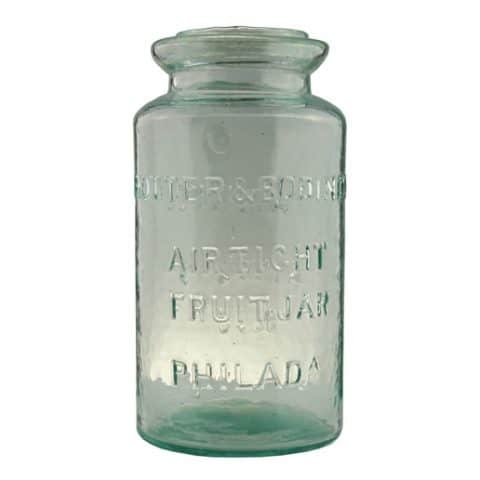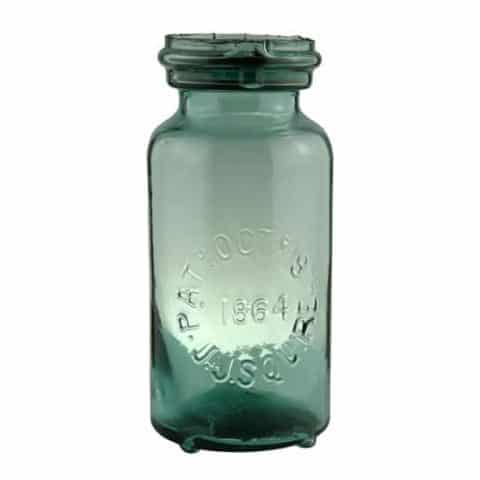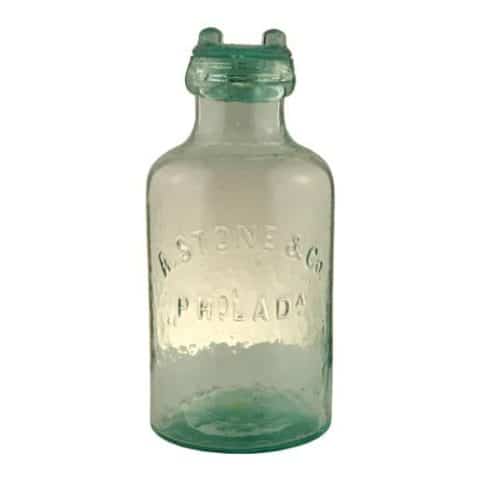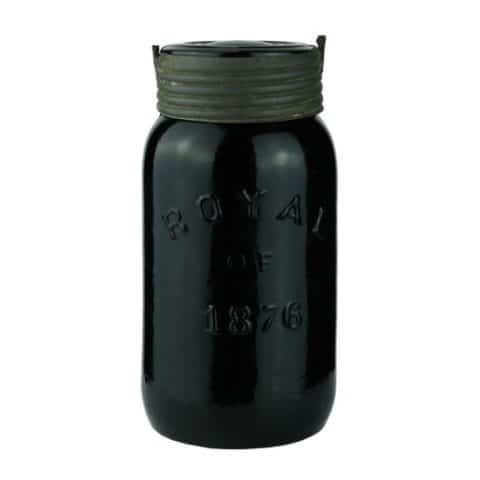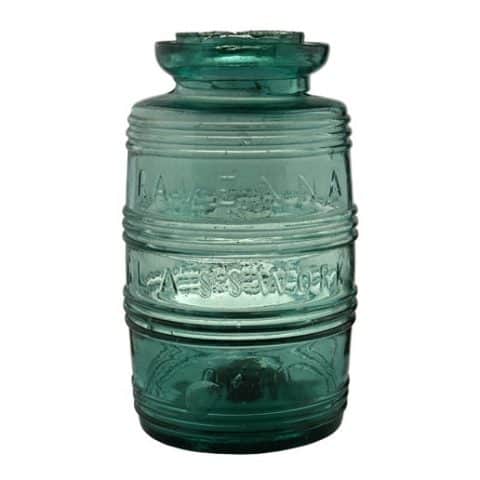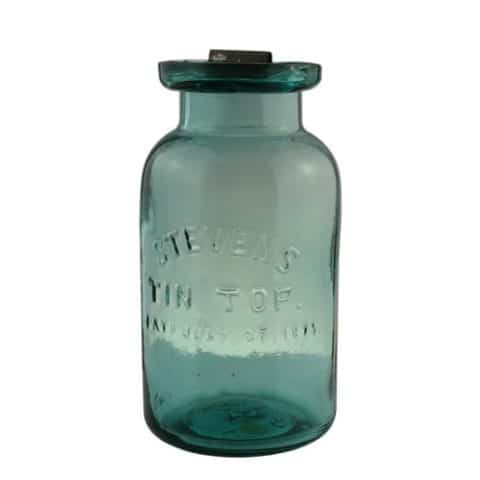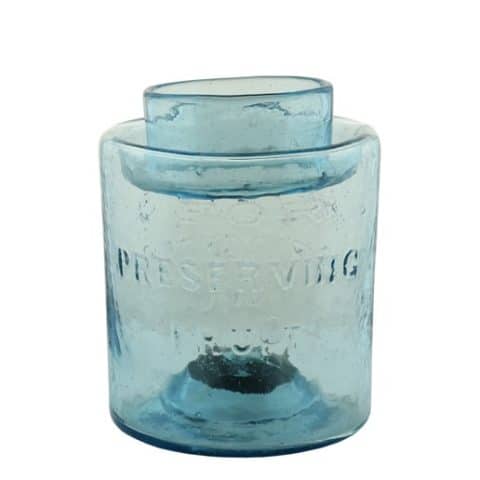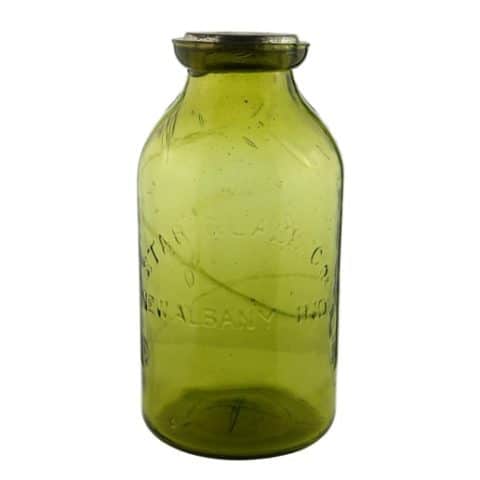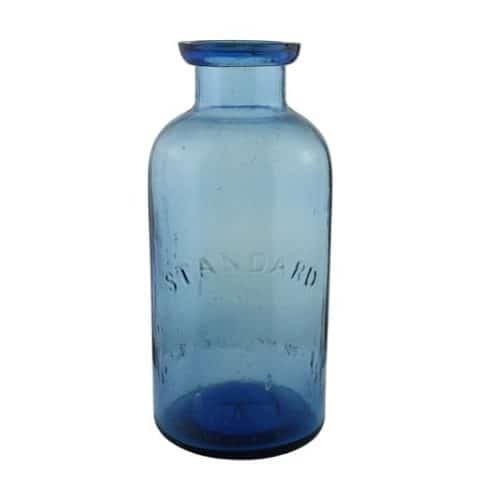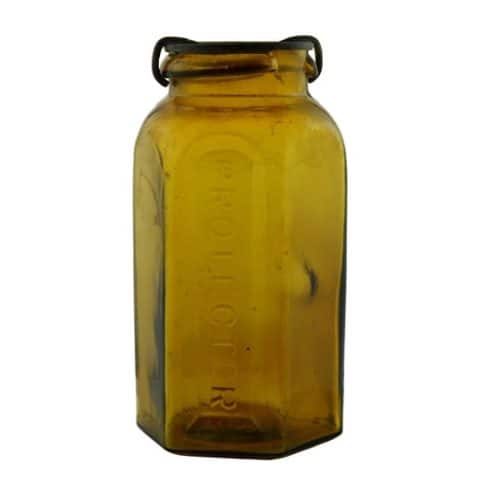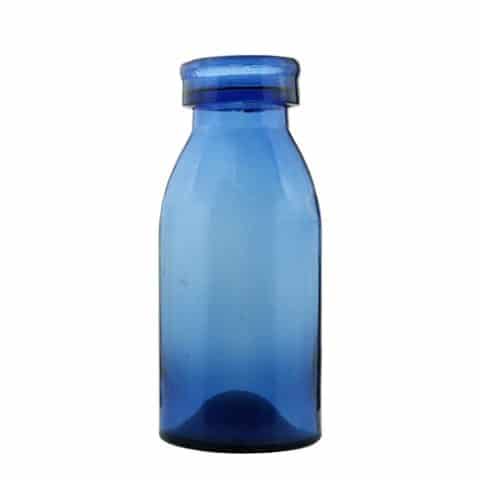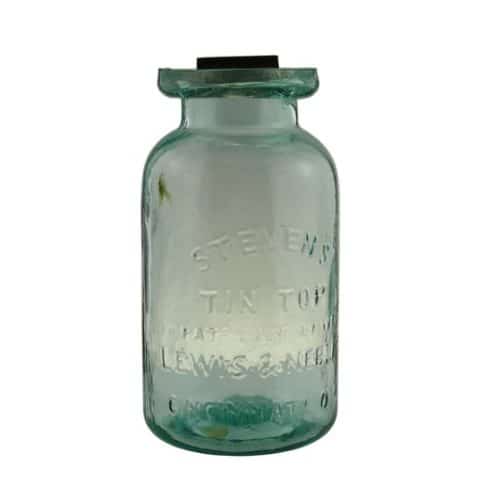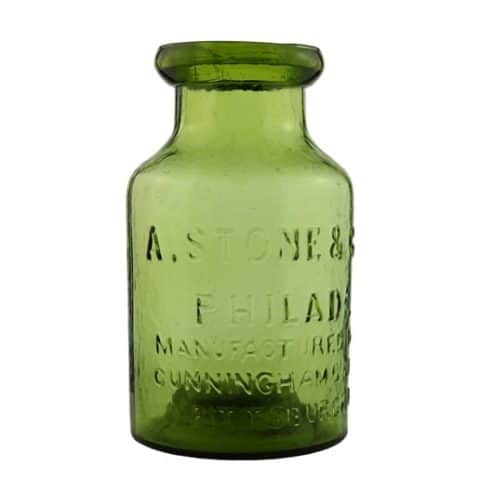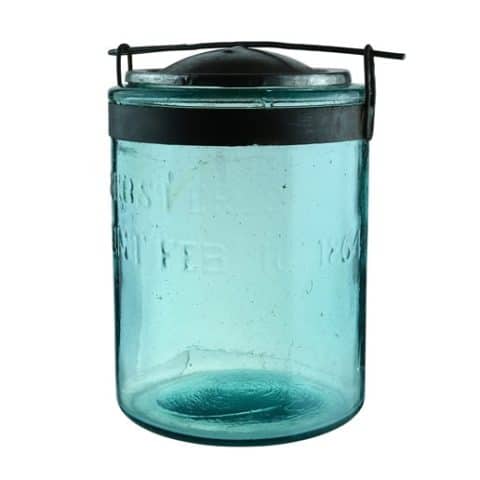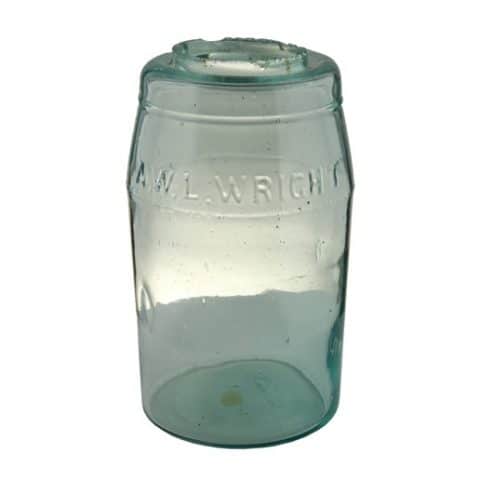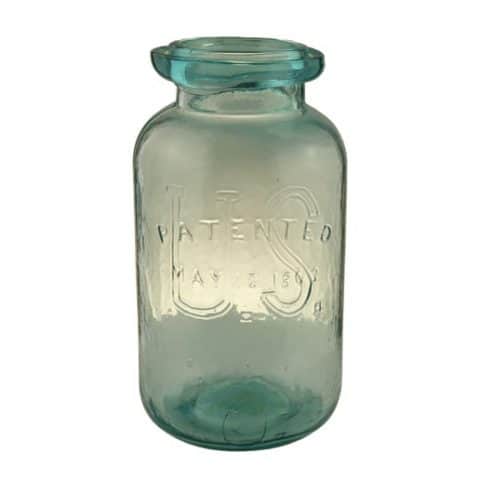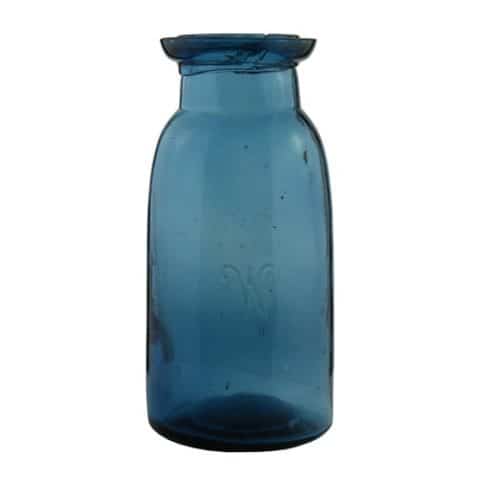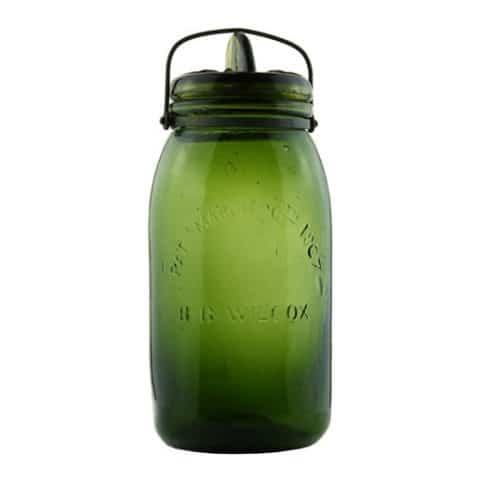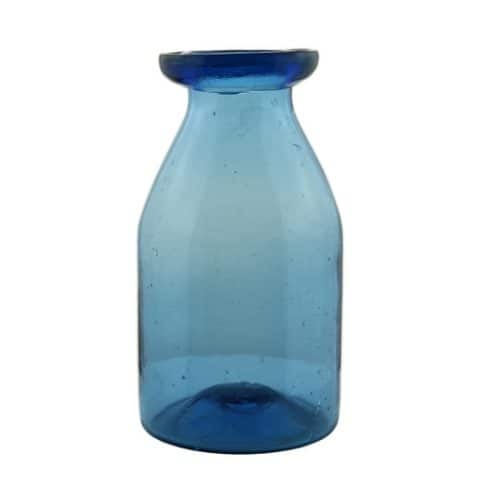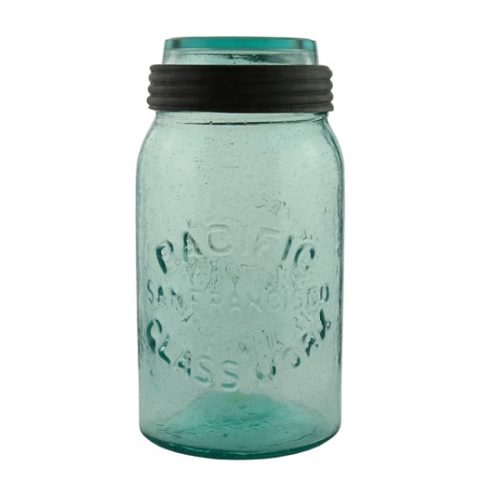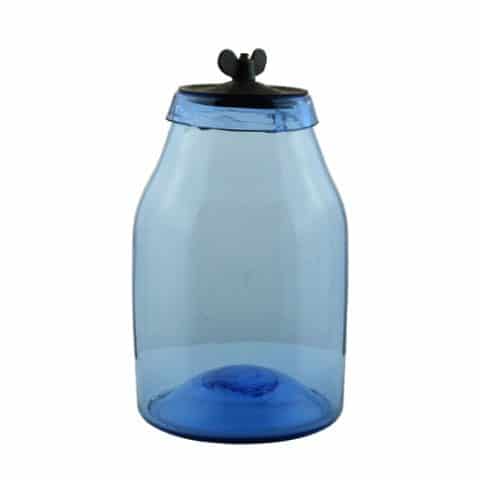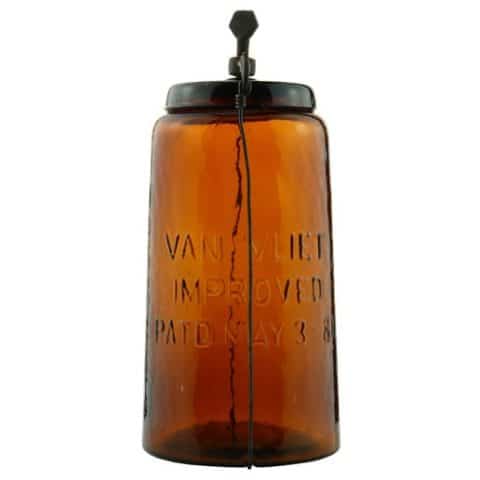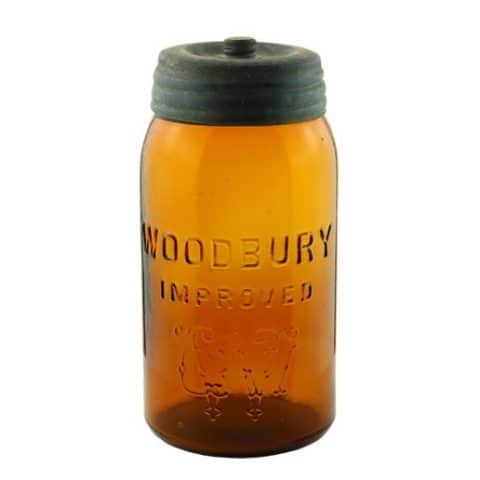Steven’s Patent Tin Top Jar
Stevens Tin Top.
PATD JULY 27 1875
Shields, King & Co., Newark Star Glass Works, Newark, Ohio
David E. Stevens & Richard F. Lumley, Newark, Ohio
Blue Green Aquamarine Quart Jar
Provenance: Jerry McCann Collection
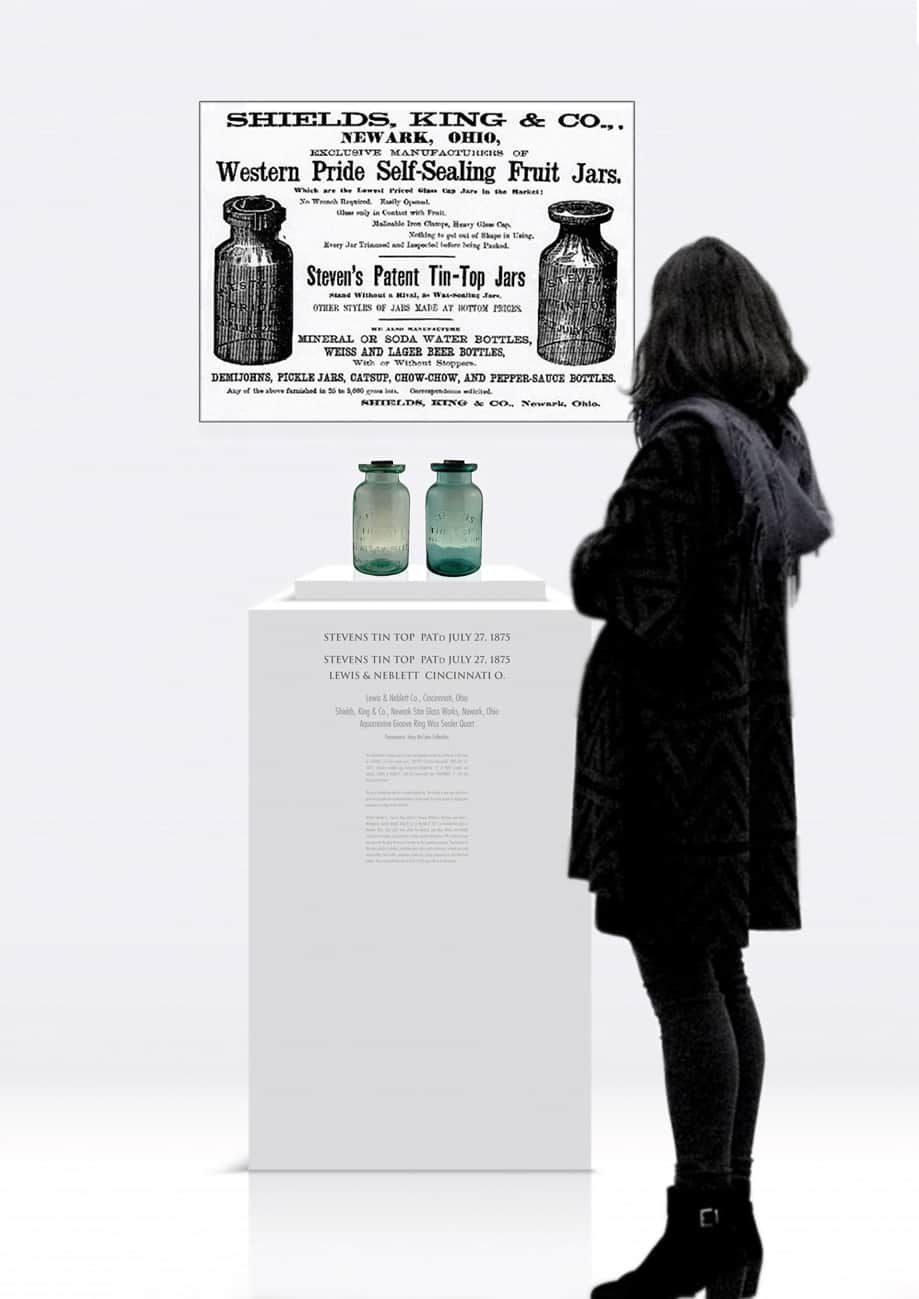
The example on the above right display represents a quart “Stevens Tin Top Patd July 27 1875” groove-ring wax sealer jar in a blue-green aquamarine glass. This is the second Stevens Tin Top jar in our museum as we also have a quart variant Stevens Tin Top – Lewis & Neblett jar sitting on the left above. You can see both examples together in the scrolling images above.
Our subject jar is embossed in a sans serif typestyle on the face of the jar in three centered lines ‘STEVENS’ (1st line convex arch), ‘TIN TOP.’ (2nd line horizontal with a period), and ‘PATD JULY. 27. 1875.’ (3rd line, smaller copy, horizontal straight-line. “D” of ‘PATD” smaller and raised, use of three periods in date).
The jar is hand-blown and has a tooled applied lip. The closure is a wax seal with a grooved ring with two small indentations on the outer lip of the groove to engage two projections on the edge of the metal lid.
William Shields Sr., Oren G. King, David E. Stevens, William E. Atkinson, and David C. Winegarner started Shields, King & Co. in the fall of 1871 to manufacture glass in Newark, Ohio. Their plant was called The Newark Star Glass Works and initially consisted of a single, six-pot furnace. It was common during the 19th century to have one name for the glass factory and another for the operating company. They focused on flint glass which is colorless, and other glass items such as fruit jars, mineral and soda water bottles, beer bottles, demijohns, pickle jars, catsup, pepper-sauce, and other food bottles. They would sell their jars in 25 to 5,000 gross lots or by the boxcar.
David E. Stevens and Richard F. Lumley patented two fruit jars in 1875. Stevens was a member of Shields, King & Co. The pair filed for a patent on March 19 and received Patent No. 165,962 on June 22 that came to be called the Western Pride Self Sealing Fruit Jar. They filed for the second patent on June 30 and received Patent No. 165,962 on July 27 that became the Steven’s Patent Tin Top Fruit Jar.
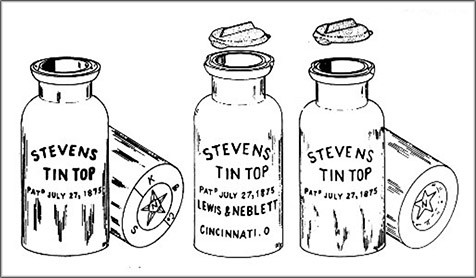
Period advertising said that Shields, King & Co. were the exclusive manufacturers of Western Pride Self-Sealing Fruit Jars using glass caps. They said that their jars were the lowest priced in the market and that no wrench was required and that it was the easiest to open. The proprietors said that the glass was the only material to come in contact with the fruit or preserves and that no tin, iron, or cement was needed that would negatively alter the taste of what was preserved. Every jar was trimmed and inspected before being packed and shipped. This was a transitional moment in jar-making as the shift from tin to glass caps was occurring.
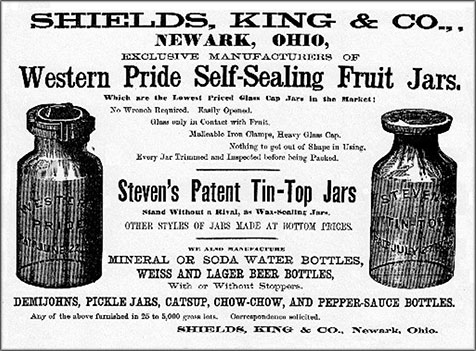
Shields, King & Co. also made the Steven’s Patent Tin-Top Jars and said they stood without rival as wax-sealing jars. This is the example that is represented in our museum. This newspaper account below gives us a really good understanding of The Star Glass Works.

Primary Image: The Stevens Tin Top jar imaged on location by Alan DeMaison, FOHBC Virtual Museum Midwest Studio
Support: Reference to Newark Star and the Everett Factory by Bill Lockhart, Beau Schreiver, Bill Lindsey, and Carol Serr
Support: Reference to Red Book #11, the Collector’s Guide to Old Fruit Jars by Douglas M. Leybourne, Jr. Alice Creswick illustration courtesy Doug Leybourne.
Support: Reference to Fruit Jar Annual 2020 – The Guide to Collecting Fruit Jars by Jerome J. McCann
Join the FOHBC: The Virtual Museum is a project of the Federation of Historical Bottle Collectors (FOHBC). To become a member.

